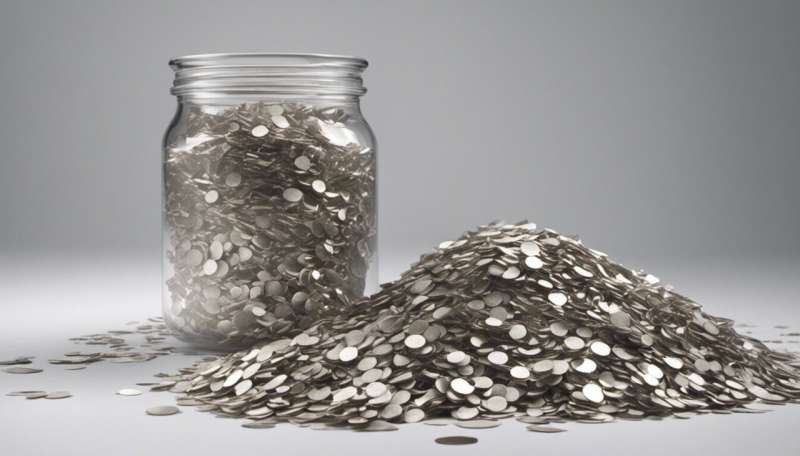A technique to analyze production processes highlights the financial benefits of recycling

A method developed by A*STAR for analyzing the financial benefits of incorporating the recycling and reuse of materials in manufacturing processes is expected to encourage more companies to adopt environmentally friendly production practices.
Increasing global consumerism is leading to a waste time bomb. All too often, products that reach the end of their useful life are either incinerated, releasing harmful byproducts into the atmosphere, or dumped in landfill sites, which are rapidly becoming full.
Both individuals and multinational companies could take greater responsibility for reducing waste by recycling. "Manufacturers are facing ever increasing pressure due to resource scarcity and environmental legislation," says Jonathan Sze Choong Low from the A*STAR Singapore Institute of Manufacturing Technology. "Dealing with it by just reducing resource consumption will not hold up anymore."
Now, Low and his co-workers have extended the traditional linear production chain that links the manufacturer to the supplier to the consumer so that it leads back to the manufacturer once the product is no longer of use—creating a so-called closed-loop supply chain.
A crucial link in a closed-loop supply chain is the process of reinserting recovered parts and materials back into the original manufacturing process—known as a closed-loop production system. Such integrated reuse of resources clearly benefits the environment, but businesses need to be certain that a production system is financially viable before they will adopt it. Low and his colleagues have now created a cost-modeling technique that simplifies this analysis.
Their procedure considers the product as a collection of recyclable subunits. In contrast, previous models considered the product as a whole, but this approach is complicated since different components have different closed loops.
"The product structure-based integrated life cycle analysis, or PSILA, technique we have developed allows users to break down a complex closed-loop production system into smaller and simpler subsystems to be modeled," explains Low. "This breakdown provides users with the deep analysis and insights needed to understand how and why the system works and what to look out for if it is implemented."
Low and the team validated the usefulness of PSILA by applying it to the life cycle of a flat-panel display. They were able to simulate the economic performance of a closed-loop production process for this common consumer product and show that such a process is financially beneficial.
"Our next step is to include environmental considerations, such as carbon emissions, into the PSILA technique," says Low.
More information: Low, J. S. C., Lu, W. F. & Song, B. "Product structure-based integrated life cycle analysis (PSILA): a technique for cost modelling and analysis of closed-loop production systems." Journal of Cleaner Production 70, 105–117 (2014). Low, J. S. C., Lu, W. F. & Song, B. Product structure-based integrated life cycle analysis (PSILA): a technique for cost modelling and analysis of closed-loop production systems. Journal of Cleaner Production 70, 105–117 (2014).
Journal information: Journal of Cleaner Production



















